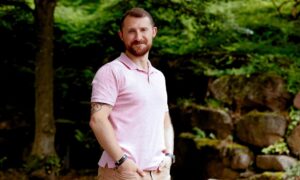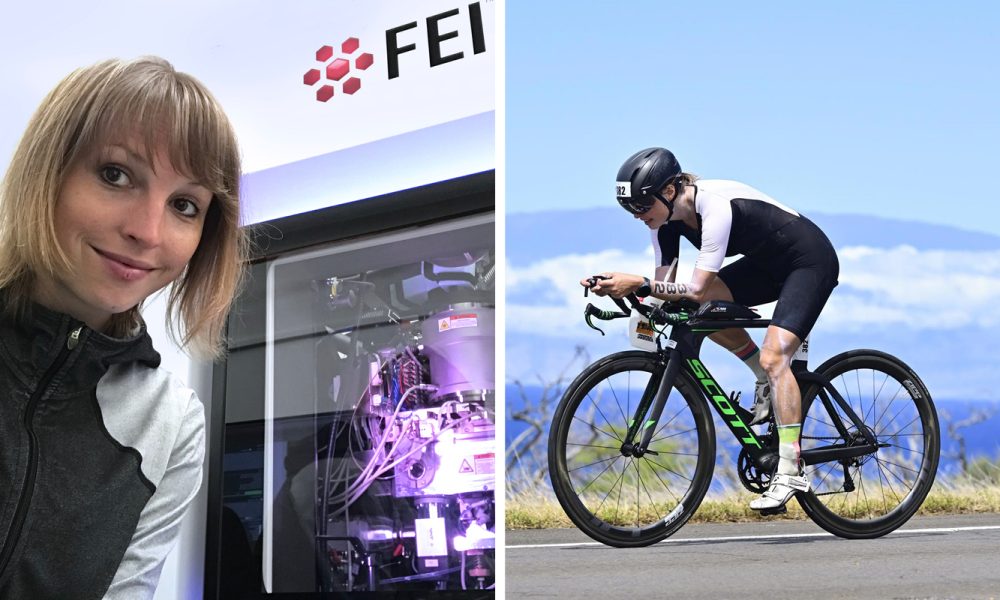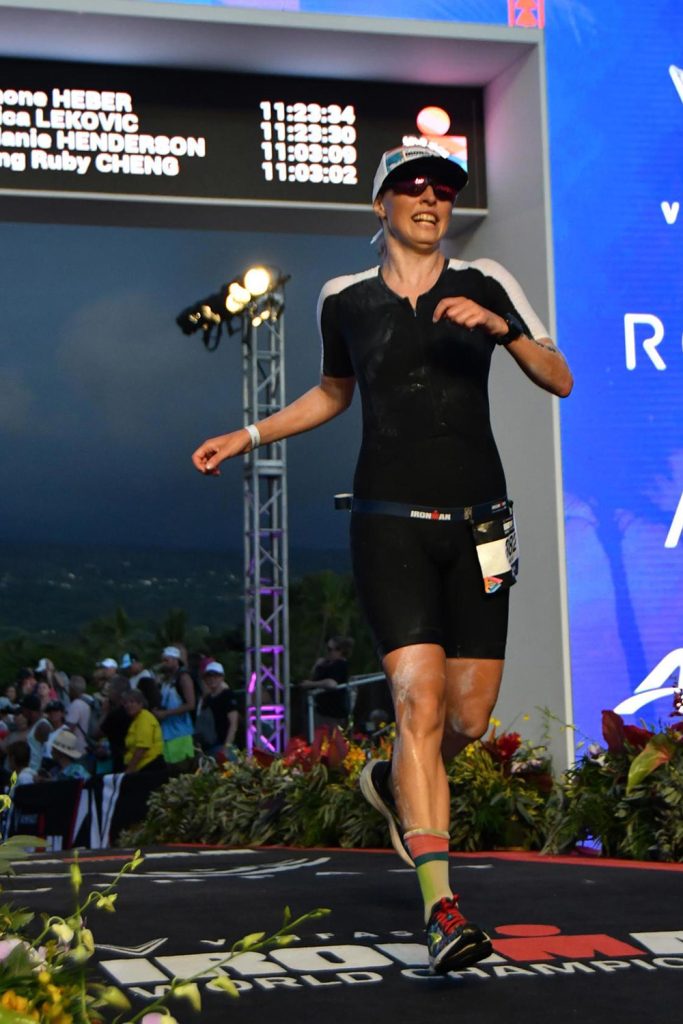
Read the latest Issue
Simone Heber talks about studying RNA transport, organising the Bike Club at EMBL, and participating in the Ironman World Championship

Simone Heber was until recently a postdoc in the Ephrussi Group at EMBL Heidelberg. In addition to her work exploring the molecular mechanisms regulating RNA transport – a crucial process in developing cells – she actively participated in many campus initiatives, including organising the EMBL Heidelberg Bike Club. In this interview, she talks about her many passions, from structural biology methods to triathlons.
My work in Anne Ephrussi’s lab involved the reconstitution of RNA transport complexes and was carried out in collaboration with Simon Bullock’s group at MRC Laboratory of Molecular Biology in Cambridge. RNA transport is a widespread cellular strategy to restrict gene expression to certain compartments. It occurs in many biological processes where cellular asymmetry is required, such as cell migration, nervous system function, or development. Nevertheless, RNA transport is poorly understood at the molecular level.
RNA is transported in ribonucleoprotein complexes (RNPs) that contain motor proteins, RNA binding proteins, and other factors with often unknown functions. RNPs (and many other cargos) can be transported by the motor proteins dynein and kinesin, which travel in opposite directions, but how their activities are coordinated to avoid futile tugs-of-war is unclear. In Anne’s lab, I took advantage of Drosophila oogenesis – the process by which the female fruit fly makes egg cells – as a model system to study this.
I focused on an mRNA called oskar, which concentrates in a specific location within the fruit fly egg cell and plays an important role in deciding where reproductive cells form in the embryo. We knew that the motor proteins dynein and kinesin-1 act sequentially to deliver oskar mRNA first from supporting nurse cells to the egg cell, and then to a specific part within the egg cell. This involves a complex RNP with more than 10 protein factors.
To study the molecular details of this complex transport process, we needed a system in which we could precisely control all these factors, so I reconstituted the two-step oskar RNA transport in vitro, with recombinant, purified proteins. Supported by structural biology (in collaboration with Janosch Hennig and Bernd Simon at EMBL), this work identified previously unknown functions of RNA transport factors and revealed a novel strategy for ensuring the sequential activity of microtubule motors. This study was recently published in Nature Structural and Molecular Biology.
I was an active member of EMBL’s running and bike clubs throughout my time at EMBL and at some point became an organiser of the Bike Club. Lunch break runs and after-work bike rides were really fun opportunities to get to know people from other labs, units, or administration, and find friends with common interests. Enjoying sports in the natural spots surrounding EMBL also always helped me to stay mentally balanced in times when experiments wouldn’t work or when I was troubled by things not working out as expected. There’s nothing like a run or ride up Königstuhl to let off steam or refresh your mind during long days at work! I was also a postdoc representative and a member of the staff association for one term to help shape our work environment as best I could. All these activities really helped me feel at home at EMBL.
This realisation did not come to me very early. I did not grow up in an academic environment, and the idea of a scientific career did not even occur to me when I finished school and started studying biotechnology, at the time clearly thinking of a job in the pharma industry. However, during my undergraduate studies, I got introduced to structural biology in a biochemistry lecture and immediately became so fascinated by the topic that I decided I needed to do this. I followed through by finding a master’s thesis placement in an X-ray crystallography lab (at the University of Pittsburgh, USA, with Andrew VanDemark) and found that I really wanted to continue doing science.

That was a very special experience! Not only does the Ironman World Championship take place on the heavenly, beautiful, Big Island of Hawaii, it is also not very easy to get into this race. You need to qualify by ranking high in your age group in another Ironman race somewhere in the world in the same year, so you get to swim 3.8 km, bike 180 km, and run 42.2 km twice in a relatively short time and have to be somewhat good at it. Needless to say this requires an amount of training for which, especially when you work a full-time job, you need dedication, discipline, and effort (plus bike commutes up to EMBL and lunch break runs with the Running Club). Luckily, this is also a scientist’s skillset, right?
The race in Hawaii then simply feels like the most beautiful reward (despite a lot of suffering on the course). Not only is Hawaii a magical place in the middle of the beautiful Pacific Ocean, with volcanoes higher than 4000 m resulting in heat and strong winds on the lava fields, it is also the home of the original Ironman race, the place where the sport first started and became legendary. For most long-distance triathletes, participating in this race is a lifetime goal. And it can neatly be combined with a vacation in Hawaii!
As a postdoc, I worked on a project of my own choice and design for the first time. In Anne’s lab, I had the freedom to shape my project in whichever way I wanted, so obviously, I became much more independent and learned many new techniques during my time at EMBL. What made this possible is EMBL’s collaborative atmosphere, a way of working I really learned to appreciate. If there was something new I wanted to do, there was always someone to help!
As my love for science started off with a fascination for the methods of structural biology, I’d choose the pioneers of biomolecular X-ray crystallography: Dorothy Crowfoot Hodgkin, John Kendrew, and Max Perutz. I’d like to hear their lab stories about solving the first structures of biological molecules and proteins.
From working in science, I learned not to be afraid of trying and testing new things and to not give up easily on my goals. There’s always something more to be done and something to be learned or found; it just may not be what I’ve been looking for. It has given me resilience that also comes in handy elsewhere in life, for instance, when you have to run a marathon after already swimming and cycling for seven hours!
I wish for much more great science from EMBL! I also hope that in its next 50 years, EMBL will continue to be a place that supports and focuses on its science, creating a productive atmosphere which makes it possible for researchers to successfully chase the answers to their scientific questions.
Looking for past print editions of EMBLetc.? Browse our archive, going back 20 years.
EMBLetc. archive